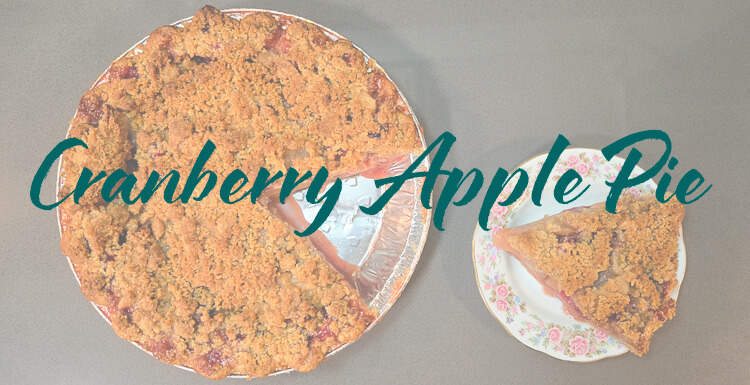
Cranberry Apple Pie Recipe with Crumble Topping
Apple pie and cranberry sauce are two enormously popular and beloved holiday staples, so it only makes sense to bring them together in one delicious, festive dessert. This cranberry apple pie (or apple cranberry pie) combines the cozy, nostalgic flavor of classic apple pie with the bright, tart punch of cranberries. Finished with a crumble topping, it’s guaranteed to stand out on any holiday dessert table.
Table of Contents
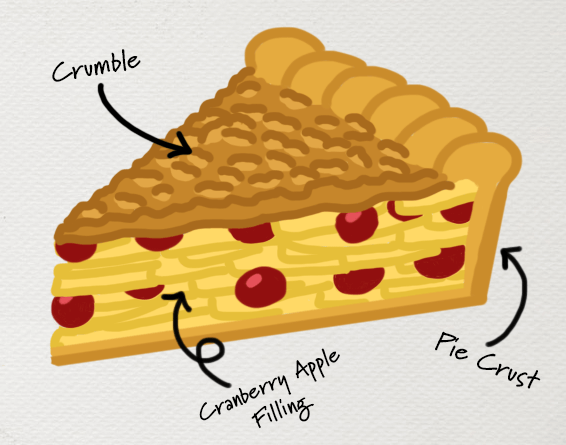
What is a Cranberry Apple Pie?
Cranberry apple pies, also known as apple cranberry pies, are a classic spiced holiday apple pie with the addition of tart, juicy cranberries. Because cranberries are extremely sour, the recipe usually calls for a bit more sugar than a traditional apple pie to keep the flavors balanced. In this recipe, the pie is topped with a buttery crumble topping to add just the right amount of additional sweetness and texture, although you can also bake it as a double-crust or lattice-topped pie with equally delicious results.
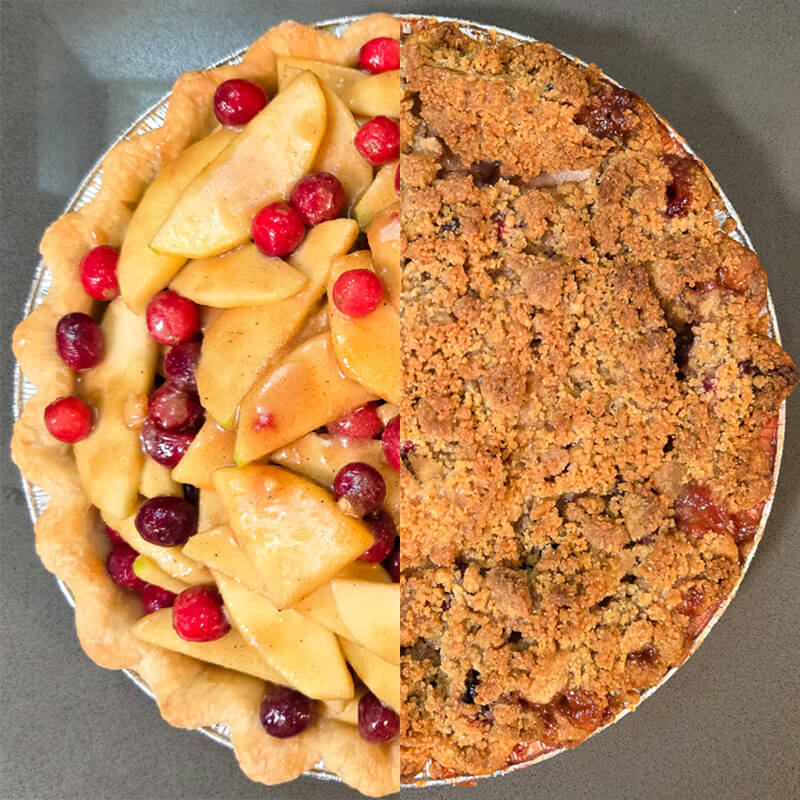
History of Cranberry Apple Pie
Cranberry apple pie is a dessert that was almost certainly being baked in home kitchens long before anyone thought to record a recipe in a cookbook. It’s easy to imagine a home cook during the holidays preparing a classic apple pie, noticing some leftover cranberries from making cranberry sauce, and tossing a handful or two into the filling rather than letting them go to waste. The natural pairing of sweet apples and tart cranberries would’ve made the combination both resourceful and festive.
As for published recipes, the earliest version I have been able to track down appears in a 1943 edition of The Joy of Cooking. After that point, cranberry apple pies began showing up occasionally in mid-century cookbooks, and they became a common appearance sometime in the 1970s. Since then, the pie has steadily held its place in holiday baking, with new versions appearing regularly in cookbooks, food magazines, and in online recipe sites.
Is it Cranberry Apple Pie or Apple Cranberry Pie?
Before the late 1970s, every recipe I could find was published under the name “cranberry apple pie.” Starting in the late 1970s, recipes also began appearing under “apple cranberry pie.” Today, you will probably encounter slightly more recipes that use the apple-first version, but both names are in wide use. I have chosen to call it “cranberry apple pie” in this post as a nod to the name it historically carried.
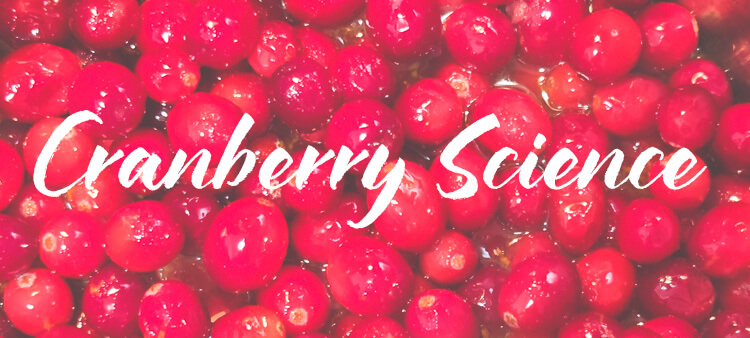
How Tart, Bitter, and Sour are Cranberries?
Cranberries are native to the wetlands and bogs of North America, where they have been growing for thousands of years. Unlike many other berries that spread by being eaten and dispersed by animals, cranberries have a unique adaptation: they float on water and travel for long distances with currents. Because they did not need to rely on animals for propagation, they never evolved to be sweet or pleasant to eat raw.
If you eat a cranberry fresh from the wetlands, without any sugar or cooking, cranberries are among the most sour and bitter fruits you can find. This natural intensity makes them unappetizing to eat on their own, but also is what allows them to shine in recipes like cranberry sauce and pies, where sugar and other fruits balance out their sharp flavor creating a well-rounded and complex flavor profile.

Acidity of Cranberries: Why Cranberries Are So Tart
When we talk about flavor, acidity is what we perceive as tartness or sourness. On a chemical level, this comes from hydrogen ions (H⁺) that are released when acids dissolve in water. Our taste buds are sensitive to these hydrogen ions, which is why acidic foods taste sour.
Acidity is measured on the pH scale, which runs from 0 to 14. A value of 7 is neutral (like distilled water), while numbers below 7 are acidic, and numbers above 7 are alkaline. The lower the number, the more acidic it is.
Fresh cranberries are extremely acidic, with a pH between 2.3 and 2.5. That makes them almost as acidic (and therefore almost as sour) as lemon juice, which typically ranges from a pH of 2.0 to 2.6. For comparison, grapefruit juice is slightly less acidic, with a pH usually between 2.9 and 3.3. This acidity is why raw cranberries taste so sour, and why they need added sugar or pairings with sweeter fruits, like apples, when used in baking.

Bitterness of Cranberries: Understanding Tannins
Cranberries are not only sour from their high acidity, they are also naturally bitter and astringent because of their tannin content. Tannins are plant compounds that bind to proteins in your saliva, creating a dry, puckering sensation in your mouth that is called “astringency.”
You may recognize the taste of tannins from other foods and drinks such as coffee, black tea, apple skins, nuts, dark chocolate, and red wine. In the right balance, tannins add a desirable complexity and depth of flavor, which is why they are so valued in winemaking and tea. In cranberries, tannins make up about 1-2% of the fruit by weight, which is relatively high compared to most fruits.
Cooking, especially boiling, reduces tannins and significantly reduces the bitterness of foods. That is why raw cranberries taste bitter and harsh, while cooked cranberries in sauces and pies mellow into a more palatable and well-rounded flavor.

Sugar Content of Cranberries: Why Cranberries Need Sweetening
One of the reasons cranberries are so unpalatable raw is their naturally low sugar content. Sugar helps balance both sourness and bitterness, softening acidity and smoothing out tannins. Compared to other fruits, cranberries are on the low end of the sweetness scale.
Fresh cranberries only contain about 4% sugar by weight. For context, lemons have around 1.5% sugar, while oranges are around 9%. Other berries fall in between. Strawberries average about 6% sugar, and blueberries around 7%. This makes cranberries noticeably less sweet than most fruits we typically enjoy without added sugar.
Because of this, cranberries almost always benefit from added sugar while cooking. Whether they are simmered in a sauce, baked in pie, or dried for snacking, the added sweetness balances their tart and bitter flavors, creating a complex, well-rounded taste. In this cranberry apple pie recipe, we add a crumble topping to add a bit more sweetness to balance out the cranberries added to the pie.
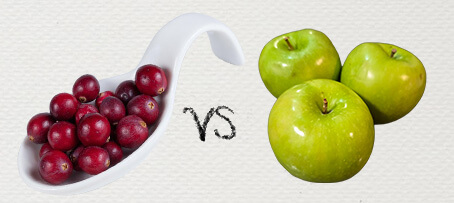
Comparing Cranberries to Granny Smith Apples
Cranberry apple pies combine cranberries with Granny Smith apples, a pairing that balances sharpness with natural sweetness. Looking at their flavor profiles side by side, we can see how they compare and why we need to add a little bit of extra sugar in this recipe compared to a classic apple pie.
Although Granny Smith apples are considered tart by apple standards, they are less acidic than cranberries, with a pH of about 3.3 compared to cranberries’ 2.3 to 2.5. Apples also contain tannins, but at a much lower concentration than cranberries – only about 0.2%. Since apple pies are often made with peeled apples and the tannins are usually in apple skin, that bitterness is reduced even further.
Sugar content is where the two fruits differ the most. Granny Smith apples, while less sweet than many other apple varieties, still contain 10-11% sugar, more than double the amount found in cranberries. This natural sweetness helps soften the cranberries’ acidity and bitterness, creating a delicious sweet-tart balance in apple cranberry pie.
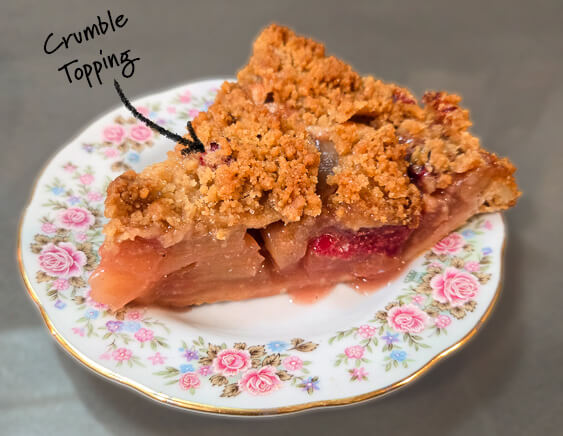
What is a Crumble Topping for Pie?
A crumble topping on pie is a popular alternative to a double-crust or a lattice top. It is made from a mixture of flour, sugar, and butter. Sometimes spices like cinnamon, or mix-ins like oats and pecans are added for extra flavor and texture. The butter is cut into the flour and sugar until the mixture resembles coarse crumbs or wet sand.
As the pie bakes, the crumble becomes a sweet, buttery, golden-brown layer with a bit of crunch that contrasts with the soft filling underneath. Crumble topping is sometimes called a crumb topping, and is especially popular on fruit pies.
Step-by-Step Cranberry Apple Pie Recipe:
Crust:
You’ll want a light-baked pie shell for this recipe. See my guide to blind baking here.
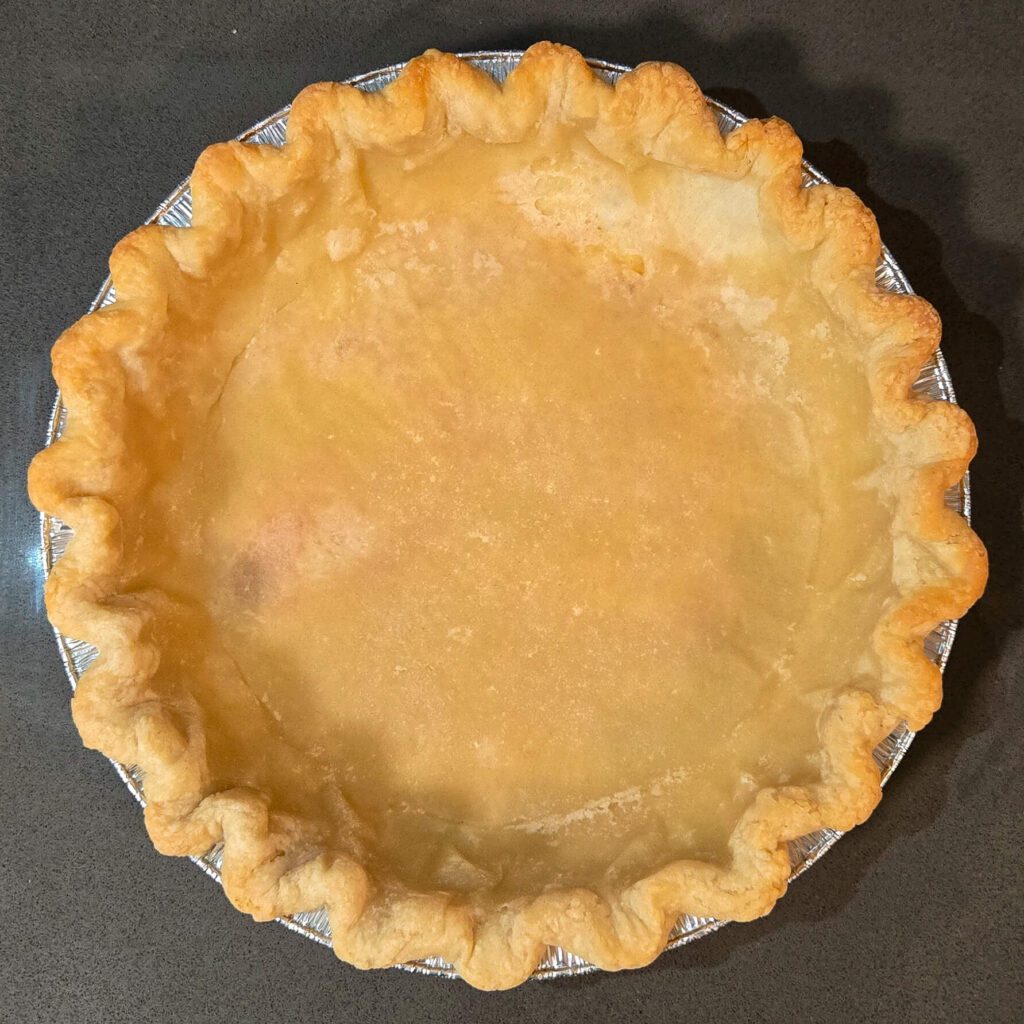
Cranberry Apple Pie Filling:
Ingredients
- 1¾ lbs Granny Smith Apples, peeled, cored, and sliced
- 8oz Cranberries, frozen or fresh
- 10T Brown Sugar
- ½c Granulated Sugar
- ¼t Salt
- 1½t Ground Cinnamon
- ¼t Ground Ginger
- ¼t Ground Nutmeg
- ⅛t Ground Cardamom
- 2T Unsalted Butter, melted
- 3T All-Purpose Flour
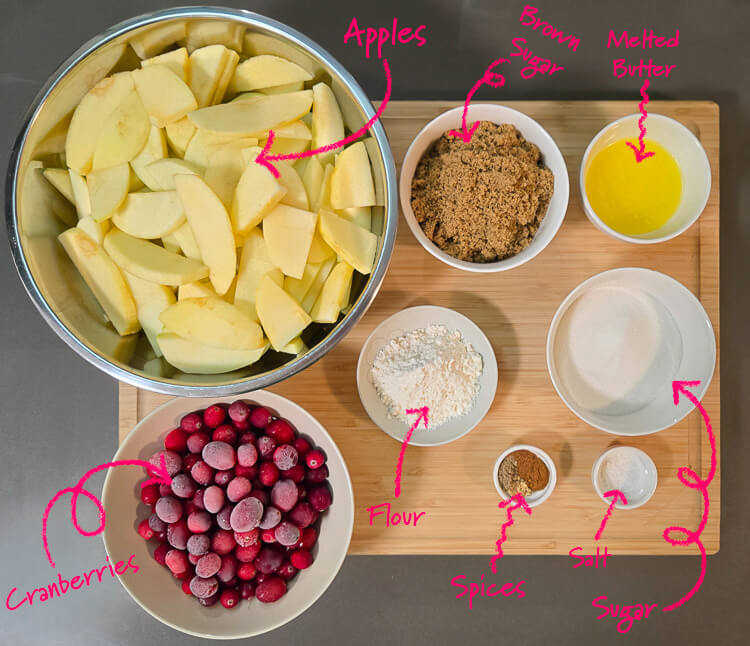
1.
In a large bowl, combine the apple slices, brown sugar, sugar, salt, melted butter, and spices. Mix well to coat evenly.
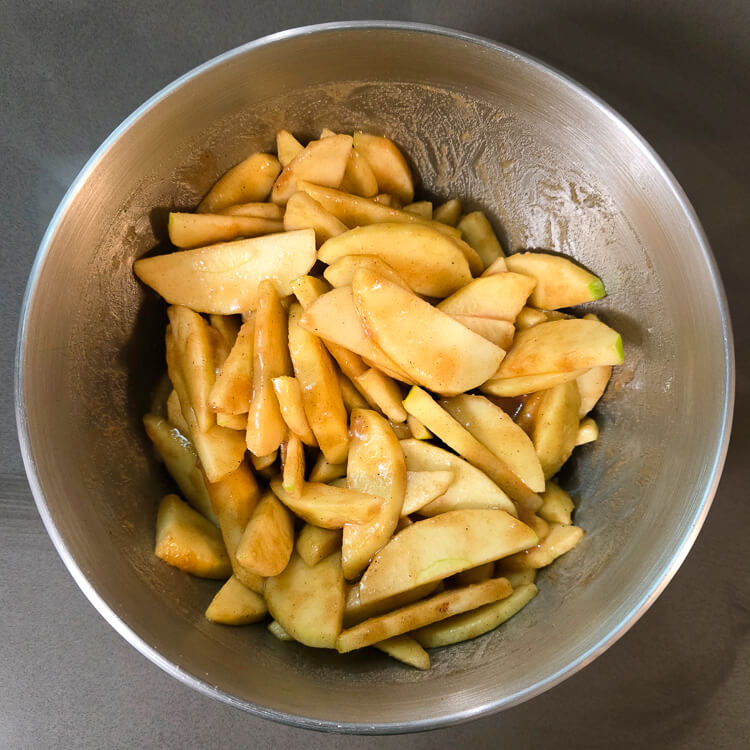
2.
Add in the cranberries, mix well and set aside.
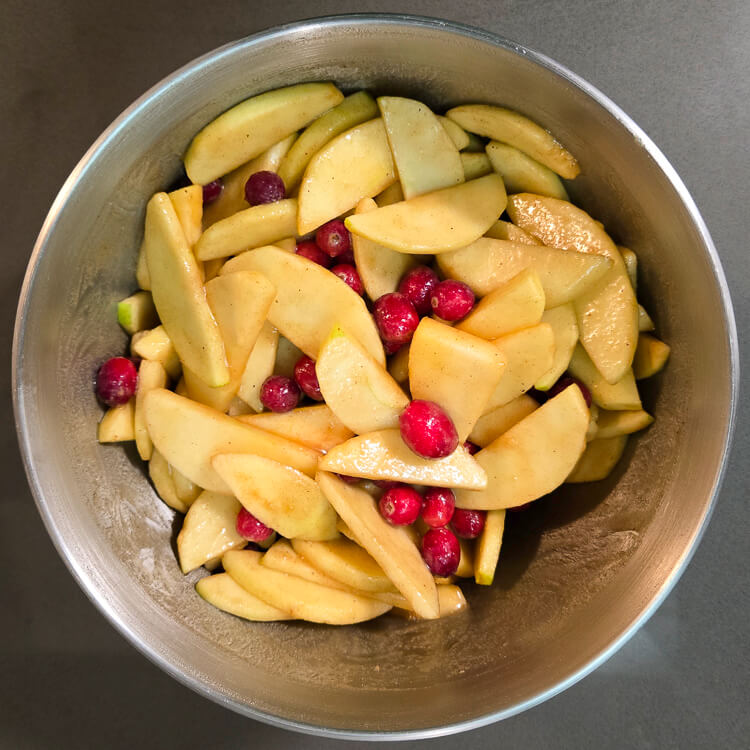
Making the Crumble Topping:
Ingredients
- 1 stick Unsalted Butter, cubed (4oz)
- 1 cup All-Purpose Flour (125g)
- ½ cup Granulated Sugar (100g)
- ½ cup Brown Sugar (100g)
- ¼t Salt
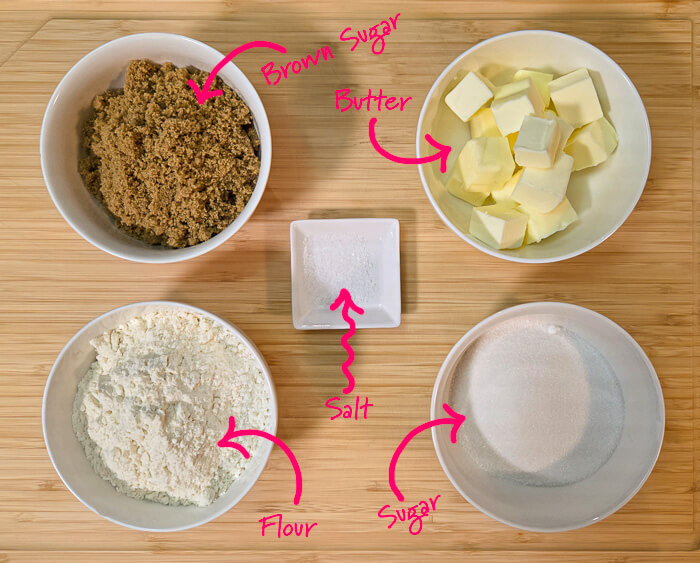
1.
In a stand mixer, combine the flour, sugar, brown sugar, and salt. Mix until fully combined.
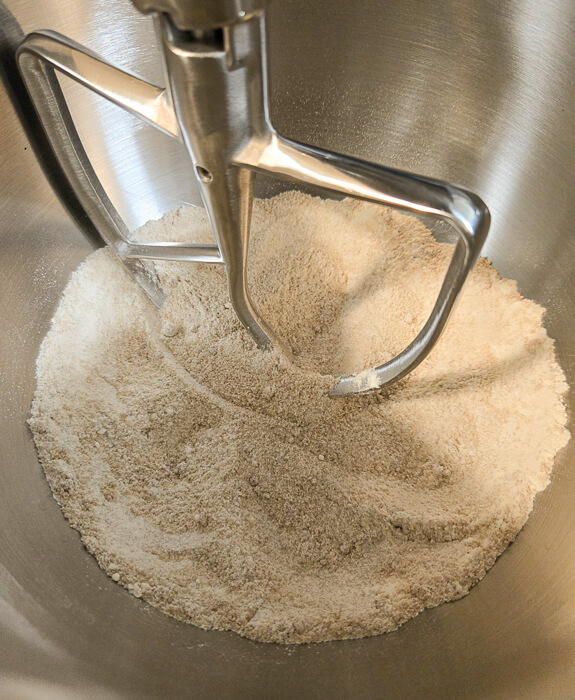
2.
Add the cubed butter. On low speed, cut the butter into the dries until no large chunks remain and the mixture resembles wet sand.
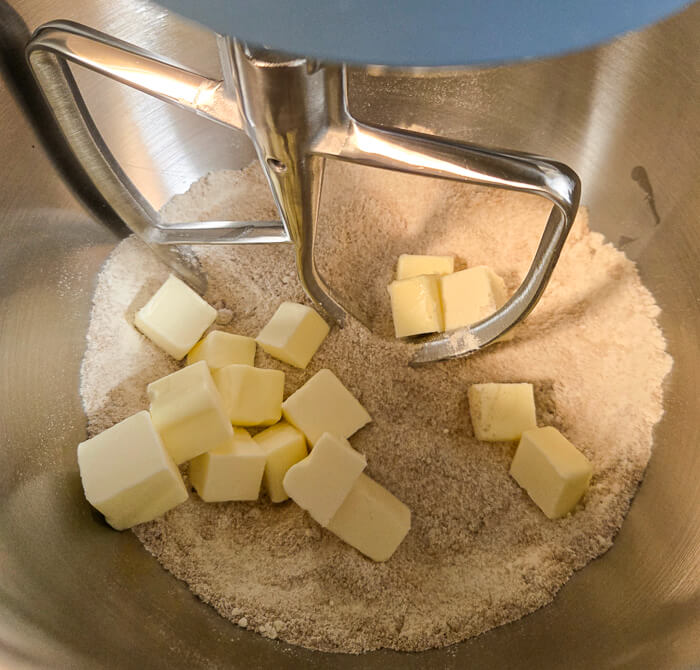
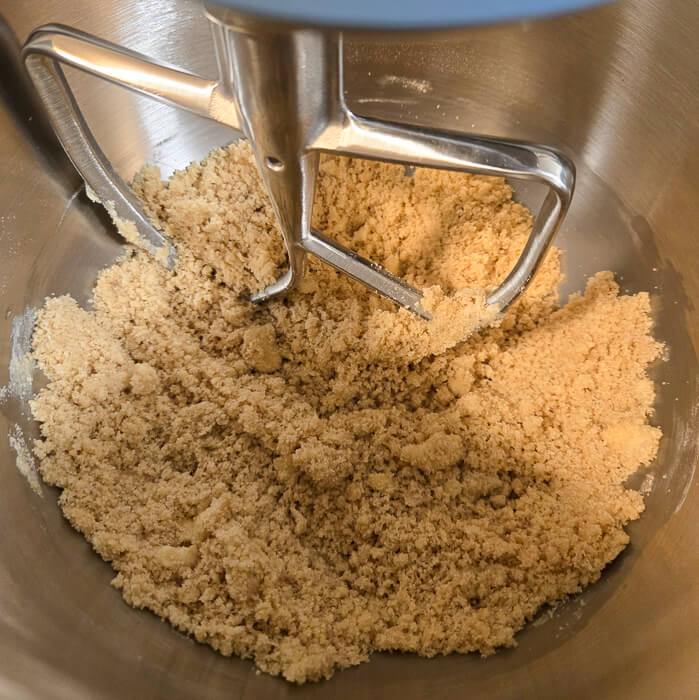
Assembling a Cranberry Apple Pie:
1.
Dump your cranberry apple pie filling into your prepared light-baked pie shell, pressing down gently to reduce any air pockets.
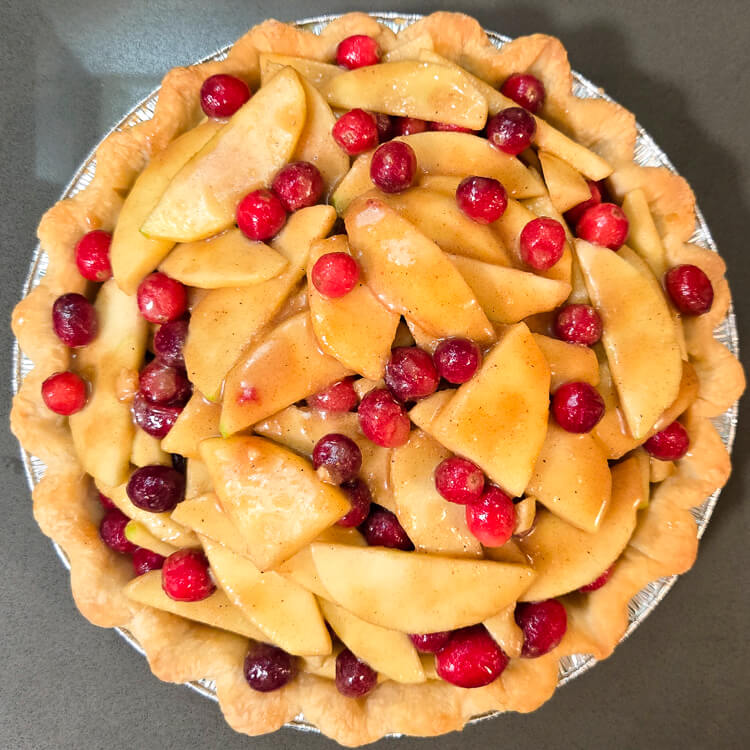
2.
Lightly brush the edges of the pie crust with cream. This ensures a beautiful golden brown color after baking.
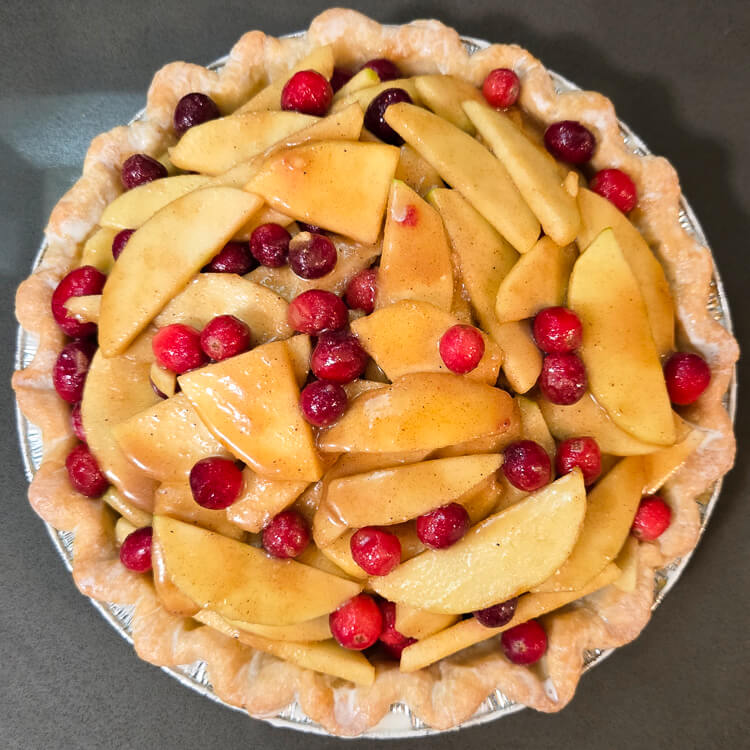
3.
Top the pie with the crumble topping. There should be no gaps where you can see the filling, but there shouldn’t be more than a single layer of the crumble either.
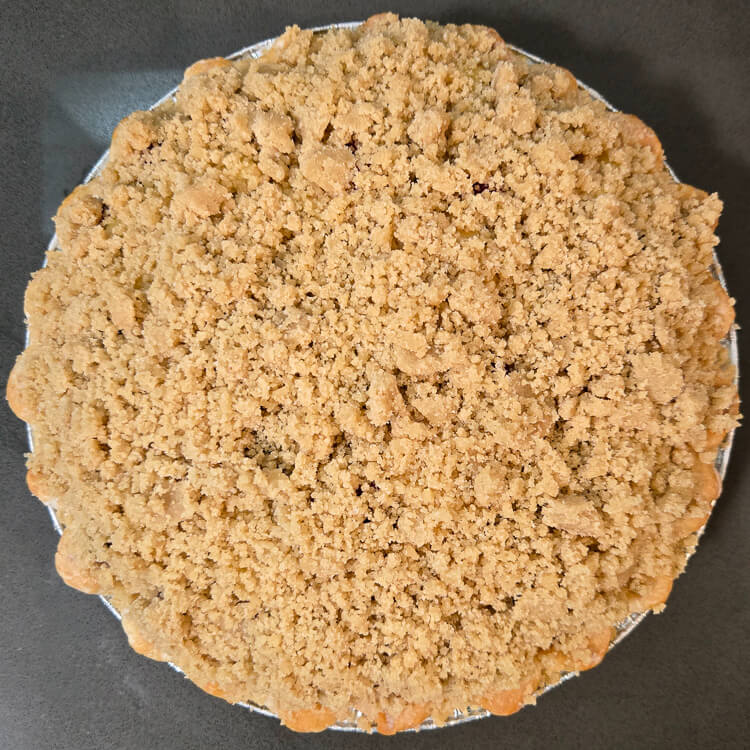
4.
Freeze your assembled pie before baking (this helps your pie bake evenly).
Assembling a Cranberry Apple Pie:
1.
Preheat your oven to 350°F.
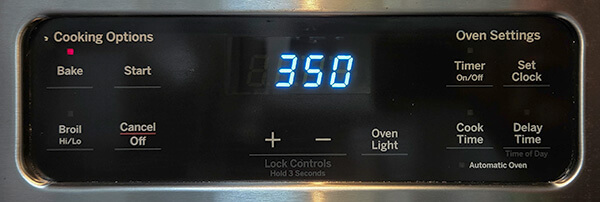
2.
Remove the pie from the freezer, and place on a parchment lined baking sheet.
3.
Bake for about 90 minutes, or until the crumble is golden brown and the filling is bubbling up slowly, like syrup.
4.
Remove from the oven and let cool at room temperature until ready to serve.
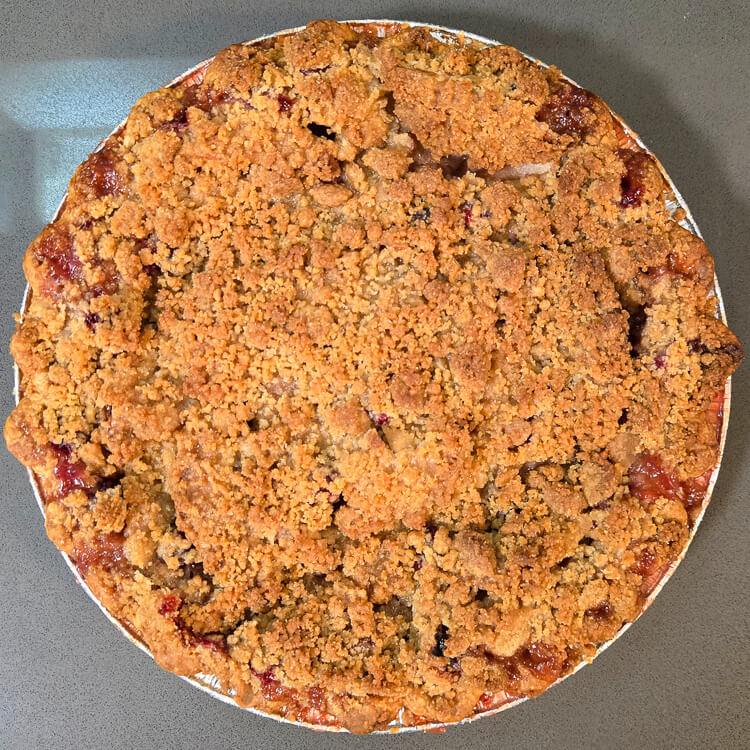
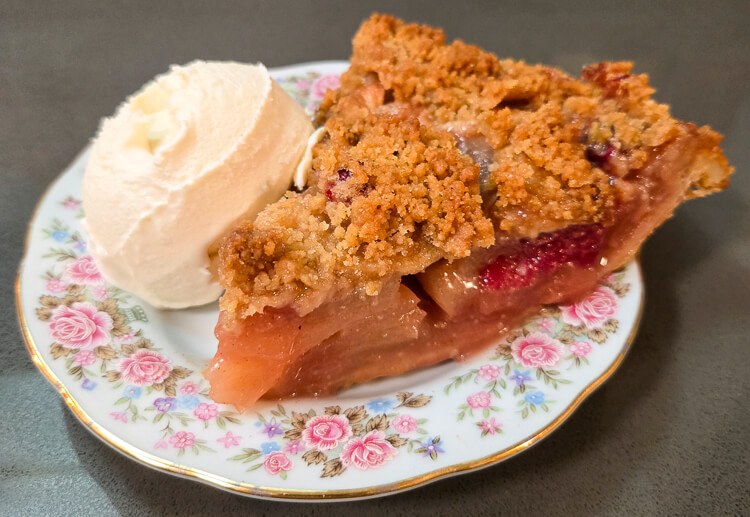
How to Serve Cranberry Apple Pie
- With a scoop of vanilla ice cream – The sweet-tart filling of apples and cranberries pairs perfectly with cool, creamy vanilla ice cream. The contrast highlights the cranberries’ brightness while softening their sharp edges.
- With whipped cream – A dollop of softly whipped cream adds a light, airy contrast to the buttery crumble topping. For a festive twist, try flavored whipped cream such as cinnamon, maple, or even orange zest, which complement the cranberry flavor beautifully.

Storage and Make Ahead Tips for Cranberry Apple Pie
Short-term storage: This cranberry apple pie can be kept at room temperature for about 1 day. After that, transfer it to the refrigerator, where it will keep for up to 1 week. Re-crisp the pie before serving if refrigerated.
Re-crisp before serving: Chilling softens both the crust and the crumble topping. To bring back that fresh-baked texture, reheat the pie before serving. Preheat your oven to 350°F (175°C) and bake for 15–20 minutes, until warmed through and the topping is crisp again.
Freezing for later: You can assemble this pie ahead of time and freeze it (unbaked) for up to 3 months. Once assembled, wrap it tightly in a freezer bag or double-wrap in plastic wrap and foil to prevent freezer burn. When you’re ready to enjoy it, bake straight from frozen until the filling is bubbling and the topping is golden. Frozen pies are especially handy around the holidays, since you can prep ahead and simply bake on the day you want to serve.
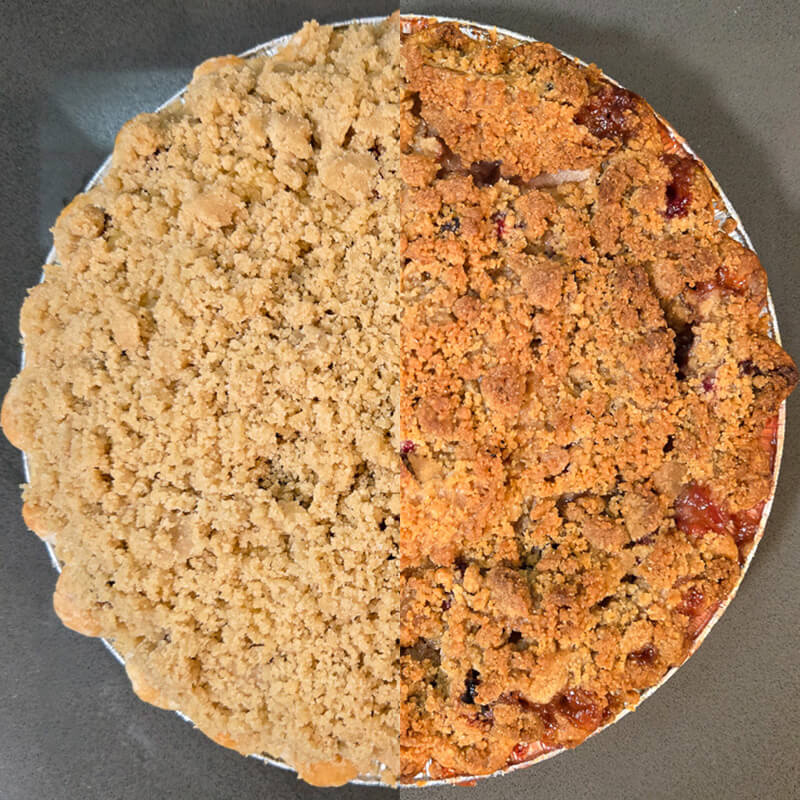
Baking Tips for Cranberry Apple Pie:
Overfill the pie before baking. The fruit will shrink as it cooks and releases steam, which can leave the filling lower than the crust if you start with a level pie. Slightly overfilling ensures the fruit bakes down into a perfectly even, flat pie after cooling.
Protect your sheet pan for easy clean up. Fruit pies almost always bubble over as the fruit juices thicken, so line your baking sheet with parchment paper before placing the pie on it. The juice will drip onto the pan and caramelize into a sticky syrup. After baking, pour a small amount of water onto the sheet pan (never onto the pie itself). This loosens the baked-on juices and makes it much easier to lift and move the pie once cooled.
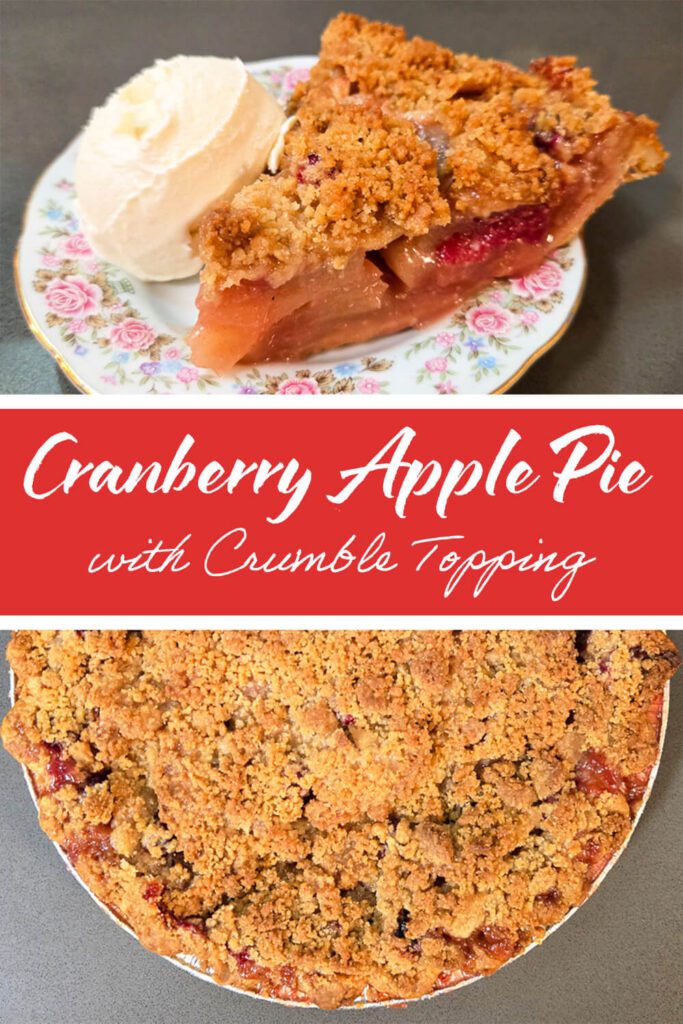
We’d love to see your cranberry apple pie creations! If you give this recipe a try, tag @doggone_baking on social media so we can share in the fall baking fun.
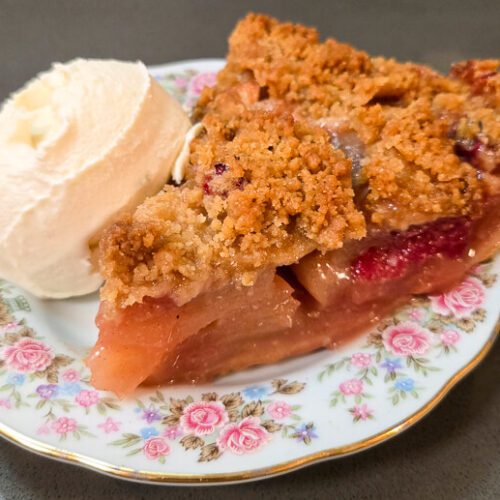
Cranberry Apple Pie with Crumble Topping
Ingredients
Crust
- 1 Light, Blind-Baked Pie Shell
- 2 tbsp Heavy Whipping Cream (optional)
Cranberry Apple Pie Filling
- 1¾ lbs Granny Smith Apples, peeled, cored, and sliced
- 8 oz Cranberries fresh or frozen
- 10 tbsp Brown Sugar (125g)
- ½ cup Granulated Sugar (100g)
- ¼ tsp Salt
- 1½ tsp Ground Cinnamon
- ¼ tsp Ground Ginger
- ¼ tsp Ground Nutmeg
- ⅛ tsp Ground Cardamom
- 2 tbsp Unsalted Butter, melted
- 3 tbsp All-Purpose Flour (25g)
Crumble Topping
- 4 oz Unsalted Butter, cubed (1 stick)
- 1 cup All-Purpose Flour (125g)
- ½ cup Granulated Sugar (100g)
- ½ cup Brown Sugar (100g)
- ¼ tsp Salt
Instructions
Prepare a Light, Blind-Baked Pie Crust
- Before beginning to make this pie, prepare a light, blind-baked pie shell. Instructions can be found here.
Make the Cranberry Apple Pie Filling
- In a large bowl, combine apple slices, brown sugar, granulated sugar, salt, spices, melted butter, and flour. Mix well to coat fruit evenly.
- Mix in cranberries. Set aside.
Make the Crumble Topping
- In the bowl of a stand mixer, combine flour, granulated sugar, brown sugar, and salt for the crumble. Mix until combined.
- Add cubed butter and mix on low speed until the mixture resembles wet sand. Set aside.
Assembling and Baking a Cranberry Apple Pie
- Add the filling to the prepared pie shell, pressing down gently to remove air pockets.
- Brush crust edges with cream if desired, for a golden brown finish. (optional)
- Sprinkle the crumble topping evenly over the filling in a single layer.
- Freeze the assembled pie for at least 30 minutes to help it bake evenly.*
- Preheat oven to 350°F (175°C).
- Place the frozen pie on a parchment-lined baking sheet. Bake for 90 minutes, or until the crumble topping is golden brown and the filling is bubbling like syrup.



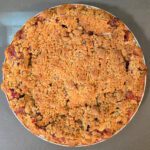





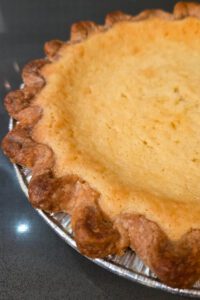
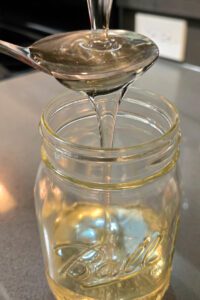
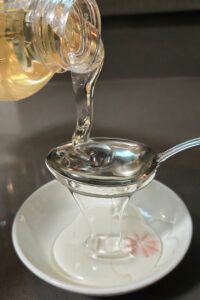
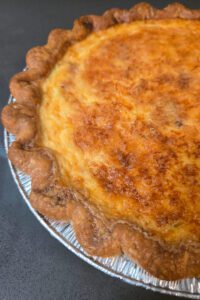


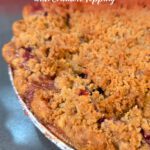

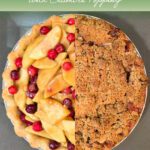
2 Comments
Loved the balance of sweet and tart. Granny Smiths and cranberries are such a perfect match. Thanks for the detailed tips!
Delicious!!!
I had some frozen cranberries left from thanksgiving (hubby is canadian) so I thought I would make this pie to use them up as they don’t last well for month in the freezer.
I made this for dessert on Friday night and it was a big hit with all the family. We had it with ice cream.